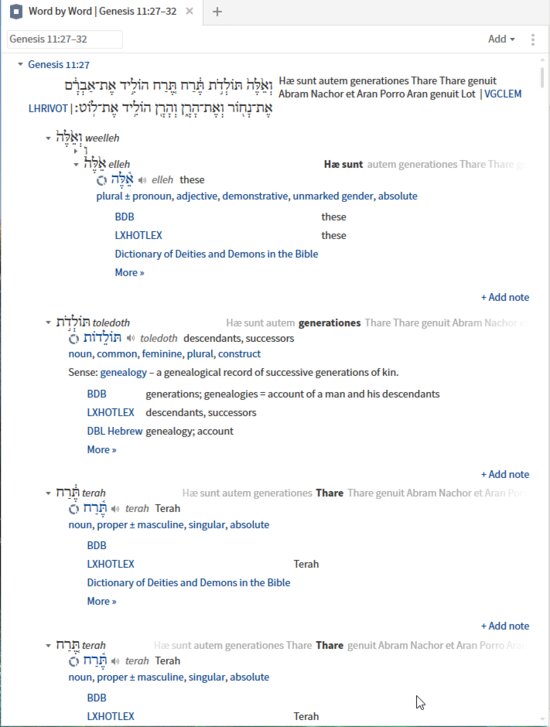Docx files for personal book: Verbum 9 part 1; Verbum 9 part 2; Verbum 9 part 3; Verbum 9 part 4; Verbum 9 part 5; Verbum 9 part 6; Verbum 9 part 7; Verbum 9 part 8; Verbum 9 part 9; How to use the Verbum Lectionary and Missal; Verbum 8 tips 1-30; Verbum 8 tips 31-49
Reading lists: Catholic Bible Interpretation
Please be generous with your additional details, corrections, suggestions, and other feedback. This is being built in a .docx file for a PBB which will be shared periodically.
Previous post: Tip 9ba Next post: Tip 9bc
Hebrew
Using The English-Hebrew Reverse Interlinear Old Testament New Revised Standard Version and Genesis 11:27-32:
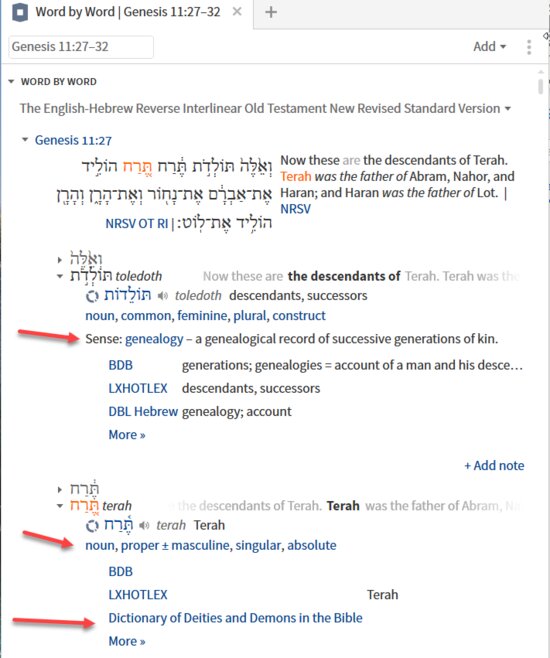
The sense line and the ± alternative morphology options are both shown. Note also the use of the specialized dictionary as a lexicon. Syntactic force is not available to the best of my knowledge. I have a query in to determine the meaning of the red font.
The available morphologies differ between the Greek and the Hebrew:
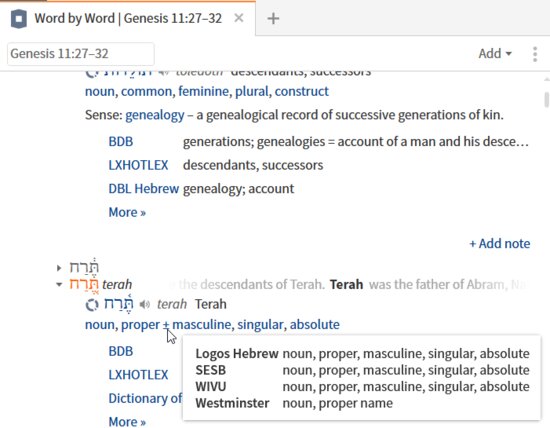
Sense, morphology, lemma, and transliteration may also be found in the reverse interlinear:
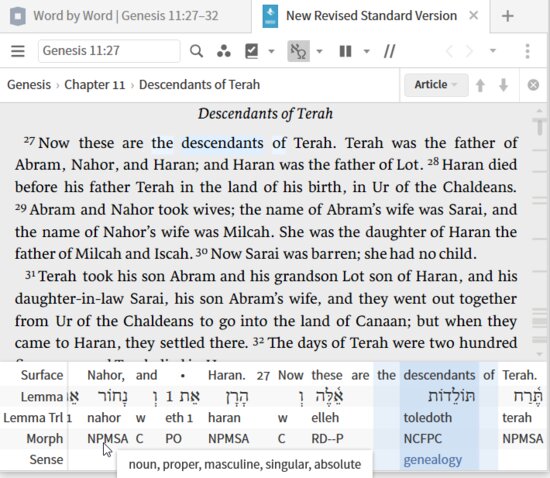
LXX (Septuagint)
Using The Greek Hebrew Reverse Interlinear Septuagint as the example.
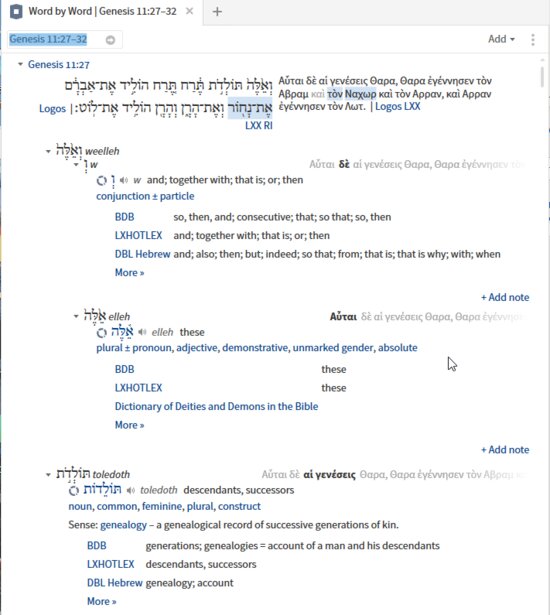
Note that presentation of the text of the verse, the original language is Hebrew and the translation is Greek. In the detail for each word, the Greek appears as the translation with the relevant word in bold. The first Hebrew word is subdivided into two words/lemmas. This was also true in the NRSV Hebrew reverse interlinear but I chose to defer noting it.
An example preview entry for a lexicon that shows no gloss:
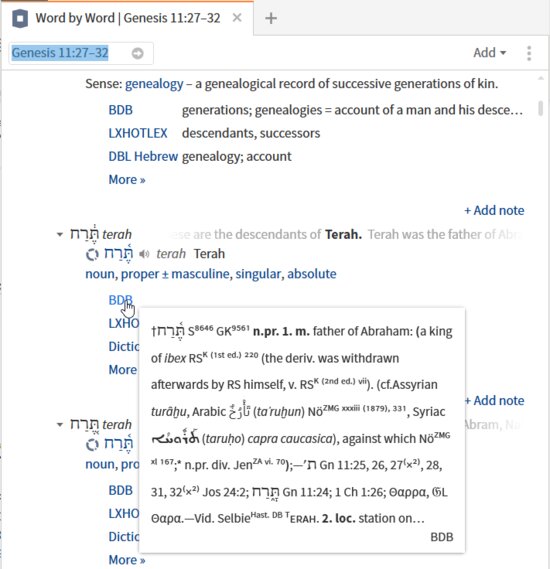
Targum
Targum Onqelos to the Pentateuch is an example of a base text without a translation or interlinear but still available to the Word by word guide:
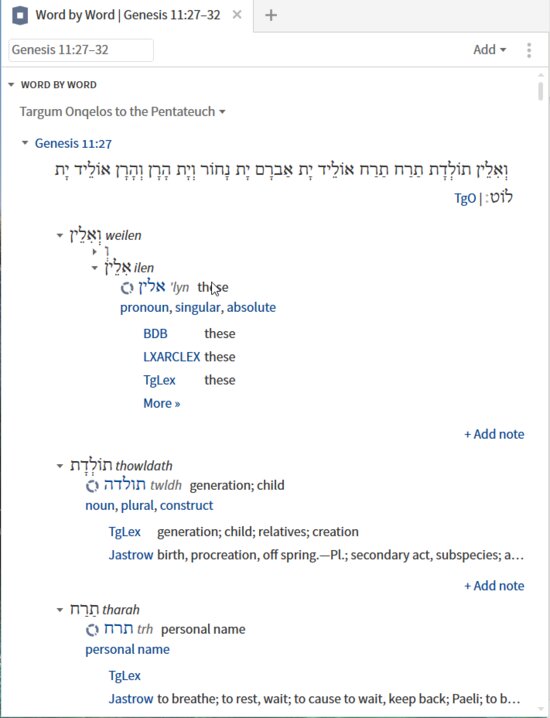
The interlinear function in the targum text provides textual variants not relevant data. However, a mouse-over shows the gutter line with relevant lemma and morphology data. Pronunciation is not available.
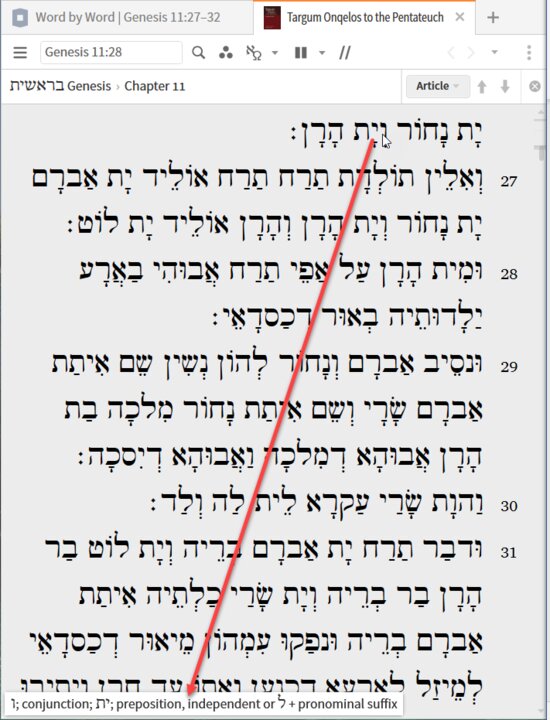
Peshitta
The Leiden Peshitta, like the Targum Onqelos, has only minimal data included including the lack of a translation, pronunciation, sense, syntactical force . . .
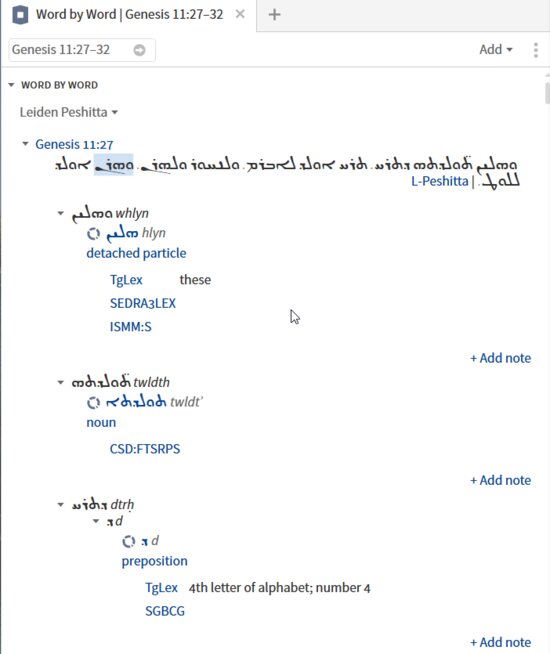
This is representative of the weakness of Oriental church history and document in Verbum. Users need to consciously work to develop a market to fill in these gaps. If there is the demand, Verbum will expand coverage.
Vulgate
The Vulgate is covered via The Latin-Hebrew Reverse Interlinear Vulgate Old Testament. The data display is similar to that provided by the Septuagint. The difference is that the translation of the Hebrew is in Latin rather than Greek.
